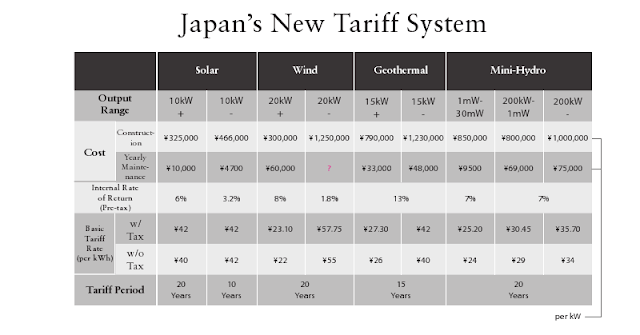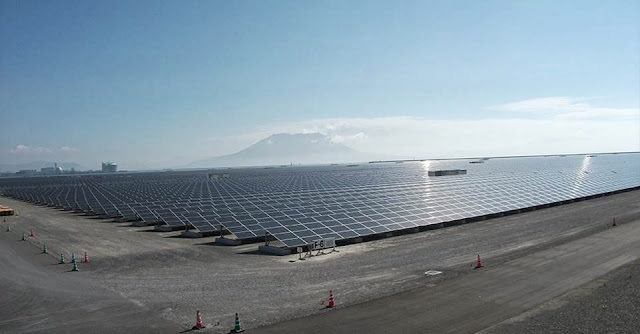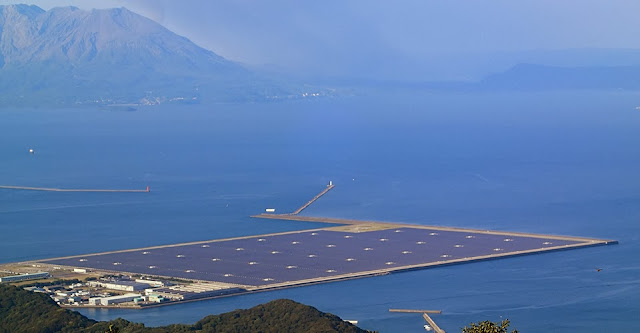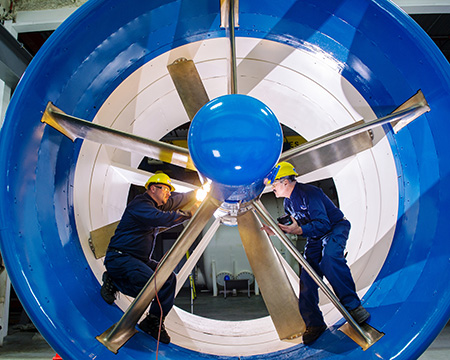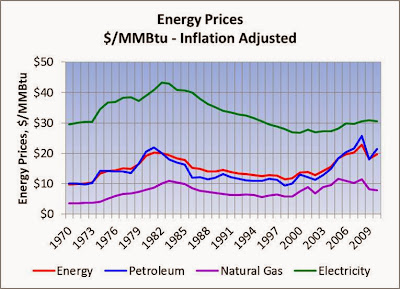Short Piece Written in Comments Section in Response to Post by Jo Confino, Executive Editor of the Guardian, titled: "Sustainability movement will fail unless it creates a compelling future vision"
Ultimately, to survive, everything thing we do will have to
be sustainable. Everything. Throughout history, societies have faced
calamities, to which their collective response made all the difference between
survival or collapse. In most cases,
societies were unable to perceive much less respond to their inherent
unsustainable ways of living, such as the Mayans, Easter Island or the Anasazi. Their societies were based on unsustainable
and precarious systems of life support tied to the environment. In some cases, challenges have been recognized
and addressed, by perceptive and strong governments which was able to identify the problem and implement solutions.
The Japanese in the 17th century were faced with extraordinary
challenge of galloping deforestation. The
government instituted policies including using less wood for construction,
putting in more efficient heating stoves, and switched to coal from wood for
heating. Japan is currently about 70% forested. In a more recent century, the world did come together to address
CFC’s.
As seen in the United States and Europe, our carbon
emissions have come down over the past five years. Some may say we have exported our carbon
emissions to Asian countries. That can
account for some of the change, but it is also important to look at reduced
miles being driven, higher efficiency of cars, the switch to lower carbon
natural gas from coal in the United States, and the growth in renewable sources
of energy in Europe and the United States.
The US and European economies are responding to higher oil prices, which
has reduced the level of economic activity and reduced deleterious
environmental impacts. This provides a
clue to our future and solving the problem in two respects. First, economies of advanced countries do
have a higher elasticity of oil price to demand than Asian countries. Second, higher oil prices result in lower
levels of economic activity, increased efficiency, and reduced environmental
impacts. The earth is telling us to cut
back on energy, and we are. The pace of
the cut back may not be as steep a glide slope as what is sought, warranted or
needed. The implication is that we need
to do something to (1) steepen the glide slope in developed
economies; (2) reverse emissions growth in developing countries; and (3)
address severe economic and well-being inequities around the world.
Governments will play a critical and pivotal role in
turning the tide towards and accelerating the move towards a more sustainable
economy. The challenge with a capitalist
system, well established in the literature and through practice, is the
frequent absence of externalities, short time frame decision horizons, and
boundary conditions that do not address social issues such as global inequity. Nation states have a hard time being first, to take the lead on tackling large issues. The move to
address deforestation in the United States, for example, began with State and
regional initiatives to set aside parkland in the early 20th
century. We can also see more recent
examples of localization of environmental initiatives with RGGI in the
Northeast, the carbon trading initiative in California, and the implementation
of renewable energy standards in selected states, representing just a few of many excellent examples.
Ultimately, realizing a sustainable economy is in the
interest of business, governments and individuals. Without sustainable resources, economic decline, which has already begun, is inevitable, and will be inexorable and painful. Forestalling initiatives
which align our policies and investments to be consistent with a move to a
sustainable economy is not in our best interest. Having a
sustainable economy is not inconsistent with our economic interests, in
fact, ultimately it is 100% consistent. This
central tenant, that increased sustainability and increased economic well-being
are one and the same, may perhaps be that new paradigm people are looking
for. The interests of sustainability and
economics are not at cross-purposes, but are of one. Any society, any collective peoples
throughout time, who did not own and embed sustainability within their societies and cultures, did not survive.
Where does this unified theory of sustainability and
economics come from? Two
perspectives. One, mentioned earlier, is
understanding the history of societies that collapsed. The second is through understanding the
source of economic activity within our own economies, and extrapolating the
future risks our economy carries without integrating concepts of sustaining the
economy going forward.
The global economy has grown to an extraordinary degree over
the past several hundred years, tied to the level of energy entering the
economy. The level of economic activity is
explained by two things: one being the level of energetic inputs entering the
economy, and the second being the level of efficiency and productivity to which
those resources are put. Energy plus
Efficiency. If we want to grow our
economy, we have two choices, increase the amount of energy resources being
consumed, and/or increase efficiency and productivity. This is a very interesting finding, given
that we can have a growing economy with a static level of energy resources
entering the economy, as long as we improve the efficiency of resource
utilization. Second interesting finding
is that if we can economically migrate our energy systems away from
nonrenewable to renewable resources, while keeping energy use static and
improving efficiency, we can once again have a growing economy while
simultaneously reducing deleterious environmental impacts.
The cost of energy, however, plays an important role on our
level of economic activity. Higher
energy costs mean a lower level of economic activity, constrained by efficiency
improvements. If sustainable sources of
energy are a lot more expensive than non-renewable, then we will see a lowering
of economic activity. The pace of the
transition will be governed by the relative economics of the alternatives, and
the degree of incentives required to level the economic playing field, and the
pace of capital formation and its availability.
Fortunately, the economics of renewable energy are getting close to
being competitive without subsidies, with costs continuing to move down over
time with scale economies and continuous improvement. So what is the process to make this happen?
(1) Build a specific vision of where we want to be and when
in terms of sustainability. For example,
80% sustainable in 40 years. Great
detail and specificity by sector, end-use, activity, etc. is highly
recommended. (2) Identify specific performance metrics to track performance
along the way, such as proportion of renewable energy on the grid,
transportation, heating, etc. (3) Implement market incentives to encourage
private capital to make investments. Put
a price on carbon, set up carbon caps with trading, keep CAFÉ going, eliminate
subsidies on non-sustainable resources, reduce transition and market barriers
where possible, expand RPS requirements to every state, implement stretch and
zero net energy building codes in every jurisdiction in the country, implement
net metering tariffs in every state, increase CHP incentives, invest in
expanded public transit, etc. (4) Implement government initiatives to
transition government faster than private markets. (5) Expand incentives and
reduce market barriers for investments in energy efficiency and
productivity. (6) Incentivize investments
in technology innovation tied to renewable energy and efficiency and
productivity.
The prescriptive set of activities identified above are no
surprise to anyone involved in accelerating our transition to a sustainable
economy. The effort to adopt these steps
has to take place throughout society, to build a groundswell of activity that
is sound and impactful, building up from the local, state and regional levels
to the national and international level.
Significant progress has been made in specific sectors and in specific
countries, such as Denmark with wind, German with Energiewende, and Texas with
wind power. There are many more
examples, including renewable fuels and efficiency, but the pace has to
increase and the efforts have to expand.
